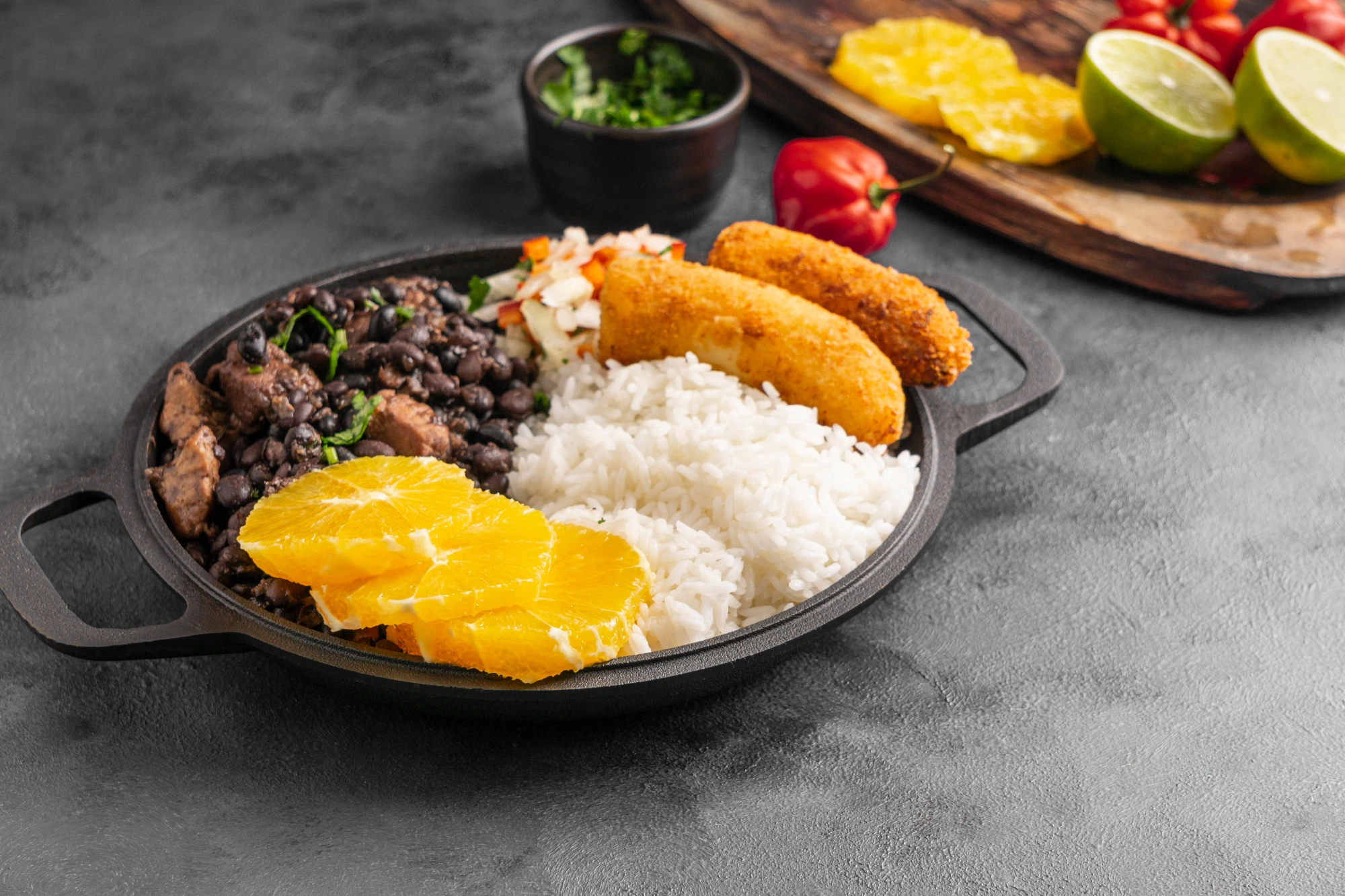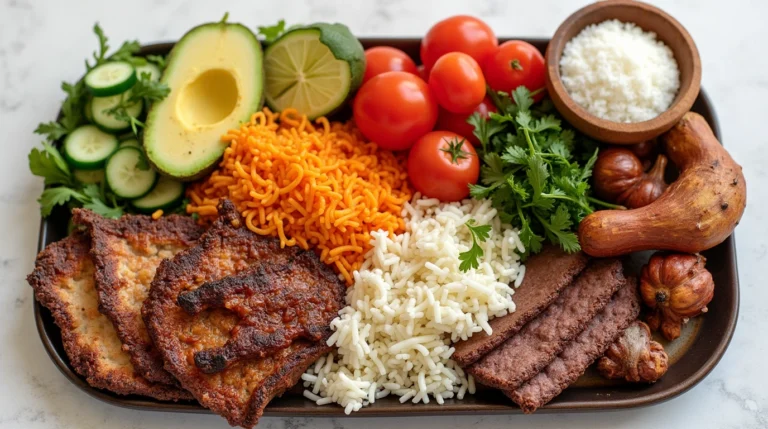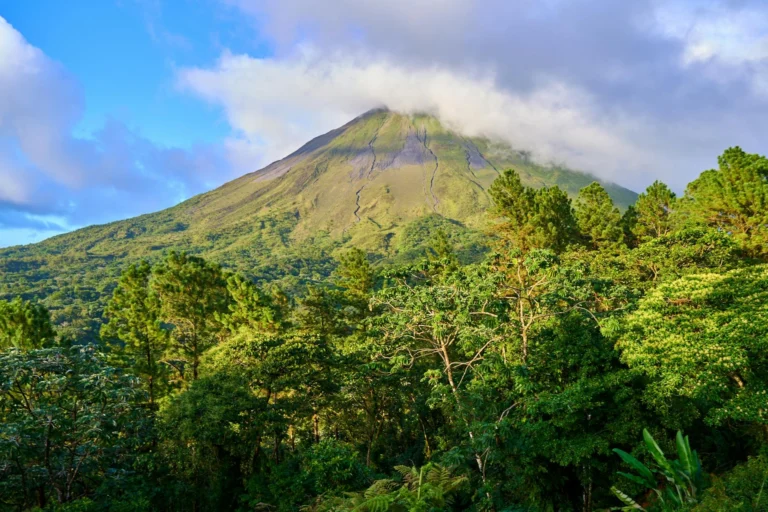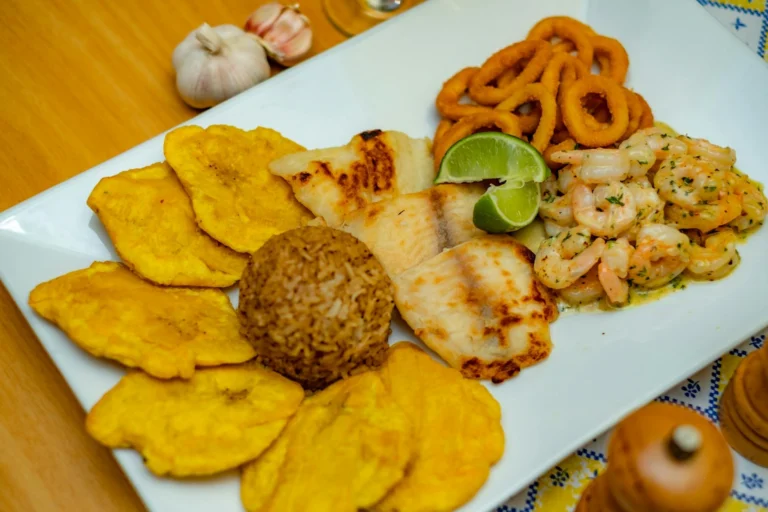11 Mouthwatering Costa Rica Food Experiences That Will Transform Your Trip
As a food writer who’s spent countless hours exploring the vibrant culinary landscape of Central America, I can tell you that Costa Rica food is much more than just fuel for your adventures – it’s a window into the soul of this fascinating country. From sizzling street corners in San José to beachside sodas in Manuel Antonio, the diverse flavors of Costa Rican cuisine tell stories of tradition, family, and the pura vida way of life.
The Heart and Soul of Costa Rica’s Food Culture
When you think about Costa Rica food, imagine wholesome, fresh ingredients combined with centuries of culinary wisdom. Unlike its spicier Central American neighbors, Costa Rican meals focus on letting natural flavors shine through. The result? Dishes that comfort and satisfy while celebrating the country’s abundant natural resources.
Traditional food in Costa Rica reflects the nation’s agricultural heritage, with rice and beans forming the backbone of most meals. But don’t let this simple foundation fool you – the cuisine is incredibly diverse, incorporating influences from indigenous traditions, Spanish colonialism, and African culture.
Essential Ingredients That Define Costa Rican Cuisine
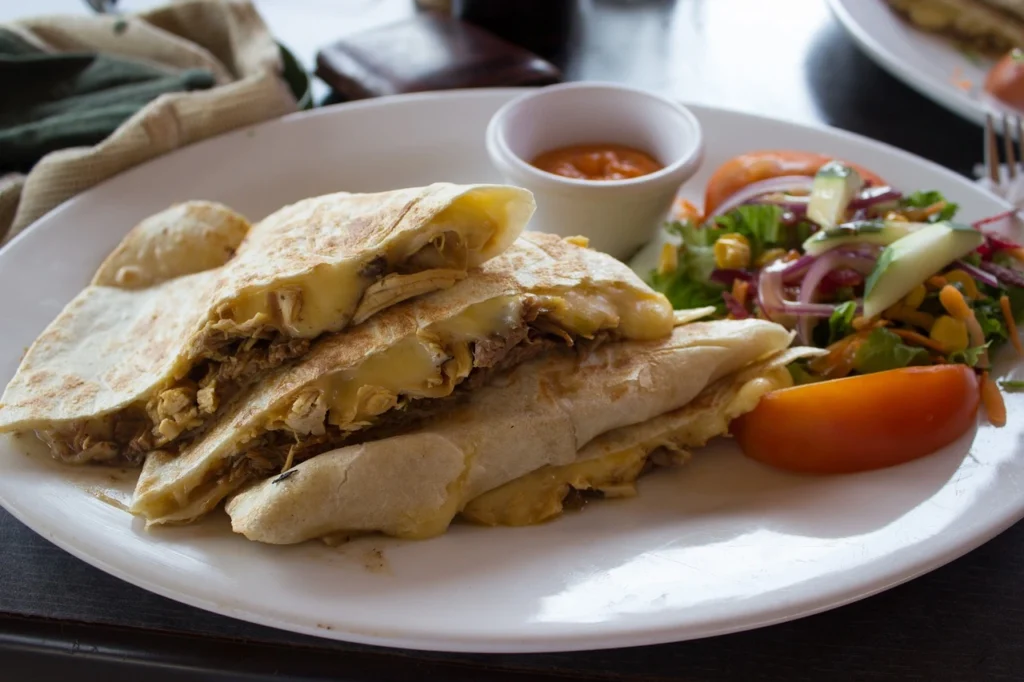
Before we dive into specific dishes, let’s explore the building blocks of Costa Rica’s national food scene:
1. Rice and Beans: The Dynamic Duo
In Costa Rican cuisine, rice and beans aren’t just side dishes – they’re the stars of the show. Whether transformed into the beloved Gallo Pinto for breakfast or served as part of a hearty Casado for lunch, these staples showcase the beautiful simplicity of Costa Rica foods.
2. Fresh Produce
The tropical climate blesses Costa Rica food with an abundance of fresh fruits and vegetables year-round. From sweet plantains to crisp bell peppers, these ingredients add color, texture, and nutritional value to traditional Costa Rican meals.
3. Proteins
While Costa Rica’s food culture emphasizes plant-based ingredients, proteins play an important role too. Fresh fish, chicken, and beef are prepared with minimal seasoning to let their natural flavors shine.
Must-Try Traditional Dishes
Let’s explore some iconic dishes that showcase the best of Costa Rican cuisine:
1. Gallo Pinto: The National Pride
As Costa Rica’s national food, Gallo Pinto deserves special attention. This breakfast dish combines rice and black beans with onions, peppers, and the country’s signature Salsa Lizano. The result is a flavorful, energy-packed start to your day that embodies the essence of traditional food in Costa Rica.
2. Casado: The Complete Meal
No exploration of Costa Rica food would be complete without mentioning Casado. This traditional lunch plate typically includes:
- Rice and beans
- Choice of protein
- Fresh salad
- Sweet plantains
- Corn tortilla
3. Chifrijo: Street Food Royalty
When it comes to Costa Rican meals, street food holds a special place. Chifrijo, a layered dish of rice, beans, crispy pork, and pico de gallo, represents the perfect fusion of flavors and textures that makes Costa Rica foods so appealing.
Regional Specialties Worth Seeking Out
Costa Rican cuisine varies by region, each area offering its own special take on traditional dishes:

Caribbean Coast
Here, Costa Rica food takes on additional layers of flavor with coconut-infused dishes and spicier preparations. Don’t miss:
- Rondon (seafood stew)
- Rice and beans cooked in coconut milk
- Patty (spiced meat pastries)
Central Valley
The heartland of traditional Costa Rican meals features:
- Olla de Carne (hearty beef stew)
- Picadillo (chopped vegetables)
- Tamal (corn dough filled with meat and vegetables)
Pacific Coast
Along the coast, Costa Rica foods naturally emphasize fresh seafood:
- Ceviche
- Pescado entero (whole fried fish)
- Camarones al ajillo (garlic shrimp)
Sweet Endings: Desserts and Treats
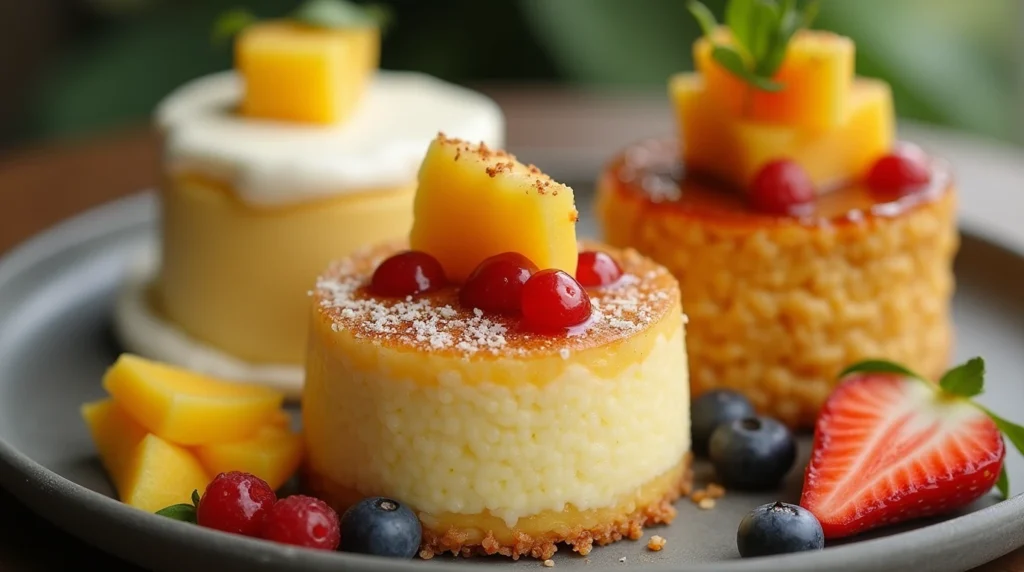
The sweet side of Costa Rican cuisine deserves special attention:
1. Tres Leches
This beloved cake soaked in three types of milk represents the pinnacle of Costa Rica’s dessert tradition.
2. Arroz con Leche
A creamy rice pudding that perfectly balances sweetness and comfort.
3. Churros
While not uniquely Costa Rican, these fried dough treats have become a beloved part of the local food scene.
Beverages That Complete the Experience
No discussion of Costa Rica food would be complete without mentioning the drinks that accompany these wonderful dishes:
1. Refrescos Naturales
Fresh fruit drinks that might include:
- Cas (sour guava)
- Mora (blackberry)
- Piña (pineapple)
2. Coffee
Costa Rican coffee is world-renowned, and enjoying a cup is essential to understanding local food culture.
Tips for Exploring Costa Rican Cuisine
To make the most of your culinary adventure:
- Seek out sodas (local restaurants) for authentic Costa Rican meals
- Visit local markets to experience fresh ingredients
- Don’t shy away from street food vendors
- Try different regional variations of the same dish
Cooking Classes and Food Tours
To deeply understand Costa Rica’s food culture, consider:
- Taking a cooking class in San José
- Joining a food tour to explore local markets
- Visiting a coffee plantation
- Participating in a traditional cooking demonstration
The Art of Costa Rican Food Preparation
Understanding how Costa Ricans prepare their food adds another layer of appreciation to the cuisine. Traditional Costa Rican meals often begin with a trip to the local farmer’s market, or “feria,” where fresh ingredients are carefully selected.

Traditional Cooking Methods
- Wood-Fired Cooking Many traditional Costa Rica food preparations still utilize wood-fired stoves or grills, particularly in rural areas. This method imparts a subtle smokiness that enhances dishes like:
- Arroz con Pollo (chicken and rice)
- Frijoles negros (black beans)
- Elote asado (grilled corn)
- Slow Cooking Costa Rican cuisine often employs slow cooking techniques, allowing flavors to develop fully. This is especially true for:
- Olla de Carne (beef stew)
- Frijoles (beans)
- Sauce reductions
Seasonal Specialties in Costa Rica Foods
While many Costa Rica food staples are available year-round, certain dishes and ingredients shine during specific seasons:
Rainy Season (May to November)
- Fresh mushrooms
- Watercress
- Chayote squash
- Warm soups and stews
Dry Season (December to April)
- Mango dishes
- Fresh coconut preparations
- Grilled seafood
- Light salads
Modern Interpretations of Traditional Food in Costa Rica
Contemporary Costa Rican cuisine is evolving while staying true to its roots. Here’s how modern chefs are reimagining Costa Rica’s national food:
Fusion Dishes
- Gallo Pinto sushi rolls
- Plantain gnocchi
- Tres leches french toast
- Chifrijo tacos
Health-Conscious Adaptations
As global food trends influence Costa Rican meals, you’ll find:
- Quinoa-based Gallo Pinto
- Plant-based Casados
- Gluten-free empanadas
- Sugar-free tropical desserts
Costa Rica Food Festivals and Events
Throughout the year, various food festivals celebrate Costa Rican cuisine:
1. Fiestas de Palmares (January)
- Traditional food stands
- Local craft beer
- Live cooking demonstrations
- Cultural performances
2. Festival Nacional de las Artes
While primarily an arts festival, it features extensive Costa Rica food exhibitions:
- Regional specialties
- Cooking competitions
- Food artisan showcases
- Wine and coffee pairings
3. Día Nacional de la Comida Típica
This celebration of traditional Costa Rican meals includes:
- Community cookouts
- Recipe competitions
- Cultural presentations
- Food history exhibitions
The Role of Food in Costa Rican Culture
Costa Rica food is more than just sustenance – it’s a vital part of the country’s social fabric:
Family Traditions
- Sunday family gatherings
- Holiday meal preparations
- Passed-down recipes
- Communal cooking experiences
Social Connections
Costa Rican cuisine fosters community through:
- Neighborhood food sharing
- Community markets
- Collective cooking events
- Festival celebrations
Sustainable Food Practices
Costa Rica’s commitment to sustainability extends to its food culture:
Farm-to-Table Movement
Many restaurants now emphasize:
- Locally sourced ingredients
- Organic farming practices
- Zero-waste cooking
- Seasonal menus
Traditional Preservation Methods
Ancient techniques still used today:
- Natural fermentation
- Sun-drying
- Smoking
- Pickling
Health Benefits of Costa Rican Cuisine
Traditional Costa Rica food offers numerous health advantages:
Nutritional Value
- High fiber content from beans and vegetables
- Complex carbohydrates from rice and corn
- Lean proteins from fish and poultry
- Abundant vitamins from tropical fruits
Balanced Meals
The traditional Casado demonstrates perfect portion control:
- 1/4 plate protein
- 1/4 plate rice
- 1/4 plate beans
- 1/4 plate vegetables and salad
Tips for Recreating Costa Rica Food at Home
For those wanting to bring Costa Rican cuisine into their own kitchens:
Essential Pantry Items
- Salsa Lizano
- Black beans
- Long-grain white rice
- Achiote (annatto) powder
- Fresh cilantro
Basic Techniques
- Proper rice cooking method
- Bean soaking and cooking
- Plantain ripening and preparation
- Sauce making
Common Substitutions
When traditional ingredients aren’t available:
- Regular black beans for Guanacaste beans
- Banana leaves for bijagua leaves
- Regular coffee for Costa Rican coffee
- Local fruits for tropical varieties
Frequently Asked Questions About Costa Rica Food
What are the staple ingredients in Costa Rican cuisine?
The foundation of Costa Rican meals includes rice, beans, plantains, and fresh vegetables. These ingredients appear in various combinations throughout the day.
What is Gallo Pinto?
Gallo Pinto is Costa Rica’s national dish, combining rice and beans with specific seasonings and vegetables, typically served for breakfast.
What is Casado?
Casado is a traditional meal featuring rice, beans, protein (chicken, beef, or fish), salad, and fried plantains – essentially a complete meal on one plate.
Is Costa Rican food spicy?
Unlike other Central American cuisines, Costa Rican food generally isn’t spicy, focusing instead on fresh ingredients and natural flavors.
What desserts should I try in Costa Rica?
Don’t miss tres leches cake, arroz con leche (rice pudding), and cocadas (coconut macaroons).
Are there vegetarian options in Costa Rican cuisine?
Yes, many traditional dishes are naturally vegetarian-friendly, including Gallo Pinto and various plantain-based dishes.
What is the best street food in Costa Rica?
Try Chifrijo (rice and beans with pork), empanadas, and patacones (fried green plantains).
How does Costa Rican food differ from Mexican food?
Costa Rican cuisine is generally milder and less spicy than Mexican food, focusing on fresh, natural flavors.
Where can I find the best local food in Costa Rica?
Look for local sodas and markets, particularly in San José, for authentic and affordable traditional dishes.
What beverages are popular in Costa Rica?
Fresh fruit juices (refrescos naturales) and local beers are common accompaniments to meals.
Conclusion
Costa Rica food is a beautiful reflection of the country’s pura vida philosophy – simple, wholesome, and deeply satisfying. Whether you’re starting your day with a plate of Gallo Pinto or ending it with a slice of tres leches cake, each meal offers a chance to connect with the heart of Costa Rican culture. Remember, the best culinary experiences often come from stepping out of your comfort zone and embracing local traditions. So on your next visit, don’t just eat to live – live to eat your way through this amazing country’s culinary landscape.

